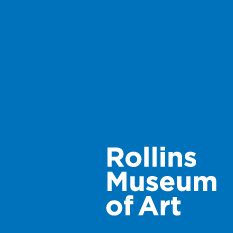A pioneer of conceptual photography, Lorna Simpson is best known for her large-scale works combining images and text. Simpson’s photography often questions and challenges conventional views on gender, sexuality, race, identity, and culture in the United States.
Works by American Photographer Carrie Mae Weems in the Rollins Museum of Art Collection
Gain insights into the works of American Photographer Carrie Mae Weems that are featured in the permanent collection at The Rollins Museum of Art.
Carmen Herrera’s quest for formal simplicity
Carmen Herrera has been described as a “quiet warrior of her art” in her uncompromising commitment to abstraction over decades […]
Artist Francisco Zúñiga’s Work Speaks Volumes
Francisco Zúñiga was born in 1912 in San José, Costa Rica where his father, Manuel María Zúñiga worked as a […]
My Dream Internship at RMA
As I walked up the steps of the Rollins Museum of Art this morning, I couldn’t believe the summer had […]
Work of the Week: Gertrude Käsebier, “The Red Man”
Gertrude Käsebier was an early supporter of the Pictorialism movement, which sought to reverse the idea that photography could not be painterly. Joining the likes of Alfred Stieglitz and Edward Steichen in the Photo Secession group, she adopted several older, labor-intensive printing styles, used alternative chemicals that yielded more nuanced tonal ranges, and reworked her plates with paintbrushes and other methods before printing. In the pictorialists’ hands, photography was art and being a photographer was a professionalized artistic craft.
Tar Beach by Faith Ringgold, From the RMA Collection
As an artist and activist, Ringgold’s career has been dedicated to exploring themes of race and gender equality. She grew up in the creatively fertile Harlem Renaissance, a time and place where perceptions of black culture and identity were redefined. Her work incorporates the narrative traditions of quiltmaking and African American history with great resonance, serving as platform to share her story and that of those before her.
Work of the Week: Juan Travieso, “Lonesome George”
Travieso’s work is ripe with environmental concerns and a call for action. The jarring effect ofhis spliced paintings serves as commentary regarding the negative impact of humaninterference in natural ecosystems, frequently referencing species’ endangerment andextinction. These themes reflect a compassion for the vulnerable and under resourced, alikely byproduct of growing up in communist Cuba. He also credits his use of bright andexpansive color palettes to the lack of art materials available to him on the island at the startof his artistic career. Lonesome George raises important questions regarding the ties between man and nature, asking for careful consideration as we inch closer to the pointwhere humans become victims of their own circumstances and reflecting on the ripple effectsof even the smallest actions.
Work of the Week: Danh Vo, “We The People”
Danh Vo’s We The People sheds light on the fragility and malleability of the concepts of freedom and democracy. Created as a series of 250 pieces, it recreates a full-scale replica of the Statue of Liberty, originally constructed by Frederic-Auguste Bartholdi. Vo intentionally broke up the replica, its many pieces entering the permanent collections of museums worldwide. The fragments’ diasporic trajectory recall the multiplicity of individual journeys that made their way at the foot of Lady Liberty as they reached Ellis Island. Inherently woven into its many segments is the lingering symbolism of the immigrant dream. But the stakes of that dream have changed, revealing the intricate power systems controlling the arm of democracy.
Work of the Week: Artist Marcus Jansen, “Plot #2”
Marcus Jansen (American, b. 1968) Plot #2, 2018, oil, enamels, mixed media on canvas, 60 x 48 in. Given by […]
Work of the Week: James McDougal Hart, “Summer Landscape”
James McDougal Hart (American, 1828-1901), Summer Landscape, 1857, Oil on canvas, 12 1/4 x 8 1/4 in. Purchased with funds […]
Work of the Week: Rafael Trelles, “La autopista del sur (The Southern Highway)”
At its simplest definition, Magical Realism is a genre of art (including visual art and literature) characterized by the inclusion of fantastical elements or events in an otherwise realistic setting. The term was most famously first applied by Cuban writer Alejo Carpentier to describe what he saw as a growing trend in Latin American literature of the time, and is most famously associated with Latin American art. Although Magic Realism is often labeled as Surrealism, the key difference is that Surrealism is based in images of the subconscious, of dreams, and Magic Realism deals in, well, reality.
Work of the Week: Caitlin Keogh, “Renaissance Painting”
Caitlin Keogh (American, b. 1982), Renaissance Painting, 2016, Acrylic on canvas, 84 x 63 in., The Alfond Collection of Contemporary Art at Rollins […]
Work of the Week: Antonio Martorell, “¿Quéslaque? Es que la…”
Antonio (“Toño”) Martorell (born 1939) is a Puerto Rican multi-media artist, educator, and writer, and a pillar of Caribbean contemporary art history. An intellectual, an artist of artists, and an artist of and for the people, Martorell‘s prolific body of work spans over six decades, consistently making references to the histories, diversity and resilience of Puerto Rican culture in face of adversity.
Work of the Week: Amy Sillman, “After Metamorphoses”
Amy Sillman (American, b. 1955), After Metamorphoses, 2015-16, Single-channel video on 5:25 min. looped, color, sound. The Alfond Collection of Contemporary Art at Rollins […]
